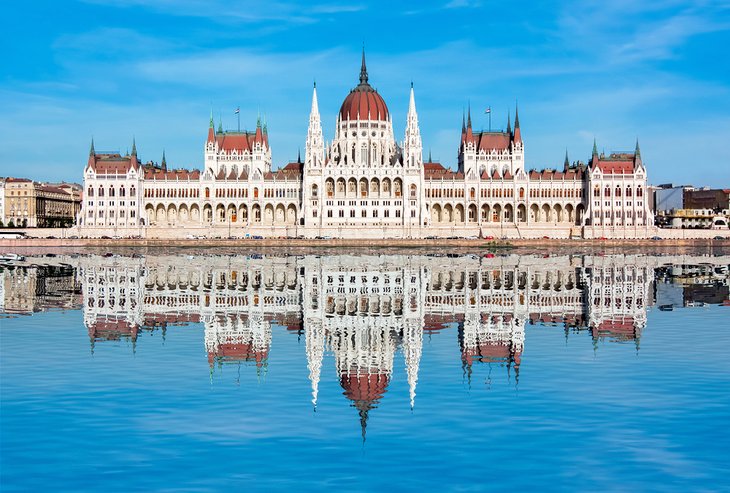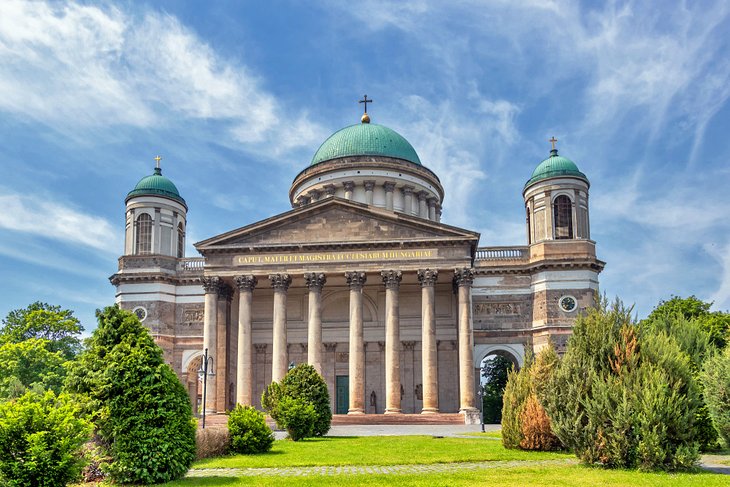
Hungary, a landlocked gem nestled in the heart of Central Europe, beckons travelers with its rich history, vibrant culture, and a treasure trove of breathtaking attractions. From the majestic Danube River bisecting its capital to the rolling vineyards and thermal springs, Hungary offers an experience that is both deeply rooted in tradition and surprisingly contemporary. This comprehensive guide will delve into the top attractions that make Hungary a must-visit destination, alongside essential travel tips to ensure a seamless and enriching journey.
A Glimpse into Hungary’s Storied Past
Hungary’s history is a captivating saga of ancient tribes, powerful kingdoms, devastating invasions, and resilient resilience. The Magyar tribes, who settled in the Carpathian Basin in the 9th century, laid the foundation for the Hungarian nation. The establishment of the Kingdom of Hungary in 1000 AD by Saint Stephen marked a pivotal moment, ushering in an era of Christianization and European integration.

Related Articles about Hungary: A Tapestry of History, Culture, and Unforgettable Attractions:
- Jakarta: A Traveler’s Guide to the Bustling Capital of Indonesia
- Discover Denmark: A Guide to Hygge, History, and Happening Adventures
- Discover the Jewel of the Levant: Your Ultimate Guide to Exploring Lebanon
- Singapore’s Golden Embrace: A Symphony of Luxury, Culture, and Unforgettable Stays
- Paradise Found: Your Ultimate Guide to the Best Hotels and Experiences in the Maldives
Centuries of Ottoman occupation in the south and Habsburg rule in the north shaped the country’s cultural landscape, leaving behind a fascinating blend of architectural styles and traditions. The Austro-Hungarian Empire, a dual monarchy, brought a period of relative prosperity and cultural flourishing, but also sowed the seeds of future conflicts. The 20th century witnessed Hungary endure two World Wars, followed by decades of communist rule under Soviet influence. The Hungarian Revolution of 1956, though ultimately suppressed, remains a powerful symbol of the nation’s yearning for freedom. Since the fall of communism in 1989, Hungary has embraced democracy and is now a proud member of the European Union, cherishing its unique heritage while looking towards the future.
Top Attractions: A Journey Through Hungary’s Wonders
Hungary boasts a diverse array of attractions catering to every traveler’s taste. Here are some of the absolute must-sees:
1. Budapest: The Pearl of the Danube
No exploration of Hungary is complete without immersing oneself in the grandeur of its capital, Budapest. This magnificent city, bisected by the majestic Danube River, is a symphony of architectural marvels, vibrant nightlife, and therapeutic thermal baths.
- The Hungarian Parliament Building: An iconic symbol of Budapest, this Neo-Gothic masterpiece is a sight to behold, especially when illuminated at night. Guided tours offer a glimpse into its opulent interiors and rich history.
- Buda Castle District: Perched atop Castle Hill, this UNESCO World Heritage site is a historical treasure trove. Explore Buda Castle, the Fisherman’s Bastion with its fairytale-like turrets offering panoramic city views, and the Matthias Church, a stunning Gothic masterpiece.
- Széchenyi Thermal Baths: Experience the quintessential Budapest thermal bath culture at the Széchenyi Baths, one of Europe’s largest. Relax in the outdoor pools, soak in the medicinal waters, and witness locals enjoying this centuries-old tradition.
- St. Stephen’s Basilica: Named after Hungary’s first king, this grand basilica is a significant religious and architectural landmark. Climb to the dome for breathtaking views of the city.
- The Great Market Hall: A vibrant sensory overload, this indoor market is a fantastic place to sample local delicacies, purchase souvenirs, and soak in the bustling atmosphere.
- Shoes on the Danube Bank: A poignant memorial dedicated to the victims of the Holocaust, this collection of iron shoes lining the riverbank is a deeply moving and important site.
- Ruin Bars: Budapest’s unique ruin bars, housed in abandoned buildings and courtyards, offer a quirky and unforgettable nightlife experience with their eclectic decor and vibrant atmosphere.

2. Lake Balaton: The "Hungarian Sea"
Hungary’s largest lake, Lake Balaton, is a popular summer destination for both locals and tourists. Its shallow, warm waters make it ideal for swimming, sunbathing, and a variety of water sports.
- Tihany Peninsula: This picturesque peninsula is home to the Tihany Abbey, offering stunning views of the lake and the surrounding landscape. Explore its charming village and unique geological formations.
- Szigliget Castle: A well-preserved medieval castle offering commanding views of Lake Balaton and its surroundings.
- Balatonfüred: A charming resort town known for its spa culture and elegant promenade.
- Badacsony Wine Region: Explore the volcanic hills of Badacsony, renowned for its delicious wines, particularly the crisp white varietals. Enjoy wine tasting tours and savor the local gastronomy.
3. Eger: A Town of Wine and History
Nestled in the northern foothills of the Mátra Mountains, Eger is a captivating town renowned for its rich history, Baroque architecture, and world-class wines.
- Eger Castle: A symbol of Hungarian resistance against the Ottoman Empire, this formidable castle offers a glimpse into the country’s military past. The castle cellars are also famously said to be where the legendary "Bull’s Blood" wine was developed.
- Eger Thermal Bath: Relax and rejuvenate in the town’s thermal baths, known for their healing properties.
- The Valley of the Beautiful Women (Szépasszony-völgy): This charming valley is home to over 200 wine cellars, where you can sample the region’s famous Egri Bikavér (Eger Bull’s Blood) and other exquisite wines.
4. Pécs: A Cultural Melting Pot
Located in the south of Hungary, Pécs is a vibrant city with a rich multicultural heritage, boasting a UNESCO World Heritage status for its early Christian necropolis.
- Pécs Cathedral: A magnificent Romanesque cathedral that has been a center of religious life for centuries.
- Early Christian Mausoleum: A UNESCO World Heritage site, this ancient burial chamber provides insights into the early Christian history of the region.
- Zsolnay Cultural Quarter: A beautifully restored area showcasing the legacy of the Zsolnay ceramic factory, featuring museums, galleries, and vibrant public spaces.
5. Hortobágy National Park: The Puszta’s Wild Heart
For nature lovers and those seeking an authentic taste of rural Hungary, Hortobágy National Park is a must-visit. This vast expanse of grassland, a UNESCO World Heritage site, is home to unique flora and fauna and the traditional lifestyle of the csikós (horsemen).
- Nine-Holed Bridge: An iconic symbol of the Puszta, this ancient bridge is a testament to historical engineering.
- Shepherd’s Museum: Learn about the traditional life and skills of the Puszta shepherds.
- Birdwatching: Hortobágy is a haven for birdwatchers, with numerous species migrating through the park.
- Horse Shows: Witness the impressive skills of the Hungarian horsemen in traditional demonstrations.
6. Szentendre: The Artist’s Village
Just a short train ride from Budapest, Szentendre is a charming riverside town that has long attracted artists and artisans. Its cobblestone streets, colorful Baroque houses, and numerous galleries make it a delightful escape.
- Museums and Galleries: Explore the diverse art collections, including the Marzipan Museum and the Skanzen (Open Air Ethnographic Museum).
- Charming Streets: Wander through the picturesque streets, browse local crafts, and enjoy the relaxed atmosphere.
Travel Tips for a Memorable Hungarian Adventure
- Currency: The official currency is the Hungarian Forint (HUF). Euros are widely accepted in tourist areas, but it’s advisable to have some Forints for smaller purchases and local markets.
- Language: The official language is Hungarian. While many people in tourist areas speak English, learning a few basic Hungarian phrases will be greatly appreciated.
- Visa Requirements: Check visa requirements based on your nationality well in advance of your trip.
- Safety: Hungary is generally a safe country for tourists. However, like any major city, be aware of your surroundings and take precautions against petty theft.
- Tipping: Tipping is customary in restaurants and for services. A 10-15% tip is generally appreciated for good service.
- Water: Tap water in Hungary is safe to drink.
- Electricity: The voltage is 230V, and plugs are Type C and F.
Accommodation Options: From Palaces to Cozy Retreats
Hungary offers a wide range of accommodation to suit every budget and preference.
- Luxury Hotels: Budapest boasts a plethora of world-class luxury hotels, many offering stunning Danube views and opulent amenities.
- Boutique Hotels: For a more intimate and stylish experience, consider the charming boutique hotels scattered throughout cities and towns.
- Guesthouses and Pensions: These offer a more affordable and often more personal experience, providing a glimpse into local hospitality.
- Apartments and Airbnb: Renting an apartment is a great option for families or those seeking more independence and the ability to cook their own meals.
- Hostels: Budget travelers will find a good selection of clean and friendly hostels, particularly in Budapest.
- Agritourism Farms: In rural areas, consider staying at an agritourism farm for an authentic countryside experience, often including farm-to-table meals.
Transportation: Navigating Hungary with Ease
Getting around Hungary is relatively straightforward, with a well-developed public transportation network.
- By Air: Budapest Ferenc Liszt International Airport (BUD) is the main gateway to Hungary, with numerous international and domestic flight connections.
- By Train: MÁV (Hungarian State Railways) operates an extensive and efficient train network connecting major cities and towns. Trains are a comfortable and scenic way to travel.
- By Bus: Volánbusz operates a comprehensive bus network, serving routes not covered by trains and offering a more budget-friendly option.
- Within Cities:
- Budapest: The capital has an excellent public transport system, including metro lines, trams, buses, and trolleybuses. Purchasing a travel card is recommended for unlimited travel.
- Other Cities: Most cities have local bus and tram services.
- Car Rental: Renting a car provides flexibility, especially for exploring rural areas and smaller towns. However, be aware of Hungarian traffic laws and potential parking challenges in city centers.
- Taxis: Taxis are readily available, but it’s advisable to use reputable companies or ride-sharing apps to avoid overcharging.
Best Time to Visit: Embracing Hungary’s Seasons
Hungary experiences four distinct seasons, each offering a unique charm.
- Spring (April – May): This is a beautiful time to visit, with blooming flowers, pleasant temperatures, and fewer crowds. It’s ideal for exploring cities and enjoying outdoor activities.
- Summer (June – August): The warmest months are perfect for enjoying Lake Balaton, outdoor festivals, and longer daylight hours. Be prepared for larger crowds and higher prices, especially in July and August.
- Autumn (September – October): The fall foliage paints the landscape in stunning colors, and the weather remains mild and pleasant. It’s a great time for wine tasting in the wine regions and enjoying harvest festivals.
- Winter (November – March): While colder, winter offers a magical atmosphere with Christmas markets in Budapest and other cities, cozy thermal baths, and a chance to experience a more tranquil side of Hungary.
Conclusion:
Hungary is a land of captivating contrasts, where centuries of history intertwine with a vibrant modern culture. From the grandeur of Budapest’s architectural wonders to the serene beauty of its natural landscapes and the warmth of its people, Hungary offers an unforgettable travel experience. By understanding its rich past, exploring its top attractions, and heeding these practical travel tips, you are sure to embark on a journey that will leave an indelible mark on your soul. Pack your bags and prepare to be enchanted by the magic of Hungary.





